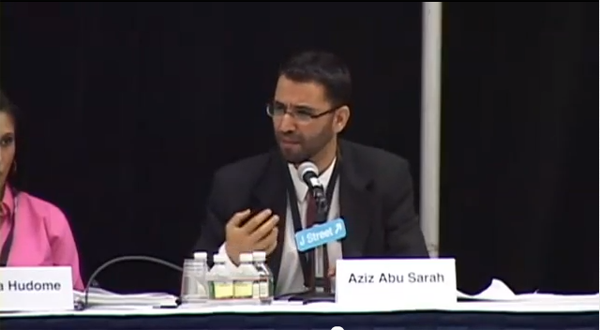Live from J Street, Part 1: Webcasting the National J Street Conference
During a 3-day gig as webcaster for J Street's Making History conference on Israeli-Palestinian relations, Jan Ozer learned a lot about the challenges of streaming events where you don't control critical factors like the set background and lighting. In part 1 of 3 on this project, Jan details the planning process and streaming setup.
Choosing a Live Streaming Service Provider
One of the first decisions that we made as a group was the selection of the live streaming platform. Brendon had used other services in the past, but was looking for a service that could stream to mobile devices, and provide links to social media if desired by the client. Livestream was one of the services under consideration, and since I was very familiar with its operation, Brendon decided to sign up for a Network Plan.
This gave Brendon the right to create up to ten premium channels that stream without advertising. Interestingly, these channels are transferable, so once the event was over, and the on-demand videos were posted to Vimeo, Brendon could delete the J Street channel and reclaim the premium channel.
On the equipment front, Bern and I discussed the various feeds that we'd be getting from the audio/video gear, and how we'd feed that into our encoding workstations, which I'll detail in the third installation. Brendon discussed where we'd be staying, when we'd need to show up and where, and how we'd allocate work during the event. He encapsulated all this into a "Webcast Production Book" that contained schedules, locations, phone numbers, streaming and archiving instructions, and the like. Very professional, and very valuable and frequently referenced during the event. If you're producing an event that involves multiple participants in multiple places, you should consider creating a similar document.
On the Ground in DC
I arrived in DC at the appointed hour and toured the two rooms. In all previous events that I had produced, I supplied lighting, advised on the set background and clothing, and placed and selected the AV gear. In this show, there were multiple moving parts, of which our group was just one. In short, we took what we got from a set design perspective.
In the main ballroom, the speakers were set against a backlit curtain, which provided great contrast from the background, creating a neat, crisp image for all the speakers that I saw. You can see this in Figure 2 (below).

Figure 2. The backlit background provided very good contrast for most speakers.
On the other hand, in the meeting room, the background was a simple black curtain, which proved less than optimal for the many speakers with black suits, black hair, or both. You can see this in Figure 3 (below).

Figure 3. A black curtain sounds good, but contrast is minimal for those with black hair or black clothing.
One solution would have been multiple back lights, shining down on the head and shoulders of the various speakers on the panel. Not being in charge of lighting, however, we did the best we could with the background we were given.
If you do have control over set design and lighting, here are a few recommendations:
- Consider using a lighter background color than black; perhaps gray or blue.
- Advise the speakers as to what colors to wear, and which to avoid, and also to avoid highly detailed fabrics like tight pinstripes and herringbones. So, if you do go with a black background, advise the speakers to wear light gray or blue.
- Install backlights to enhance the contrast between speaker and background.
- If possible, install lights on the sides of the room to supplement the overhead fluorescents. This will help make sure that the faces are evenly lit, rather than the bright forehead/dark chin produced by solely overhead lighting.
That's it for installment one; back in a week with the shooting and monitoring skills I picked up during the event.
Related Articles
In this final segment of this series on the JStreet Making History convention webcast, we'll examine one aspect of webcast production that too often gets ignored: monitoring and controlling audio volume, which becomes a complex issue as speakers change, audio techs and shooters adjust their own levels, and the webcaster is left to make sure the signal sent over the web remains audible and consistent.
HP's Z1 is the first all-in-one computer with workstation components and field serviceability. Here, encoding expert Jan Ozer takes a look at how this workstation-class portable PC fared in a live production and webcast environment, with testing emphasis in 3 areas: rendering, streaming encoding, and live encoding.
Jan Ozer passes on several key tips on framing panels and applying the rule of thirds (and when to break it) gleaned from his recent gig webcasting the national J Street conference on Israeli-Palestinian relations.